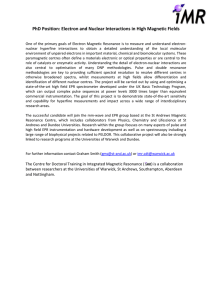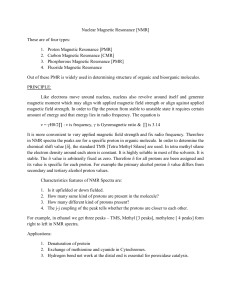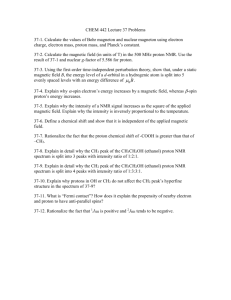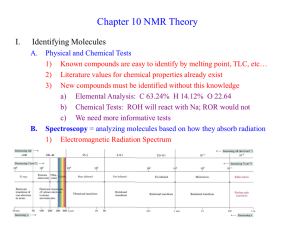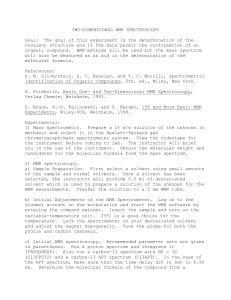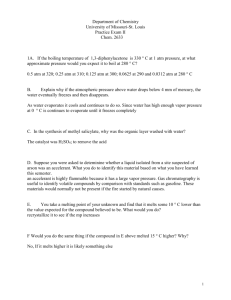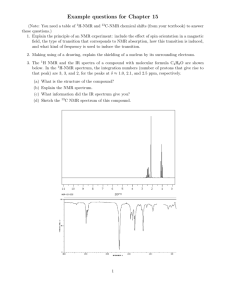Electronic Spectroscopy
advertisement
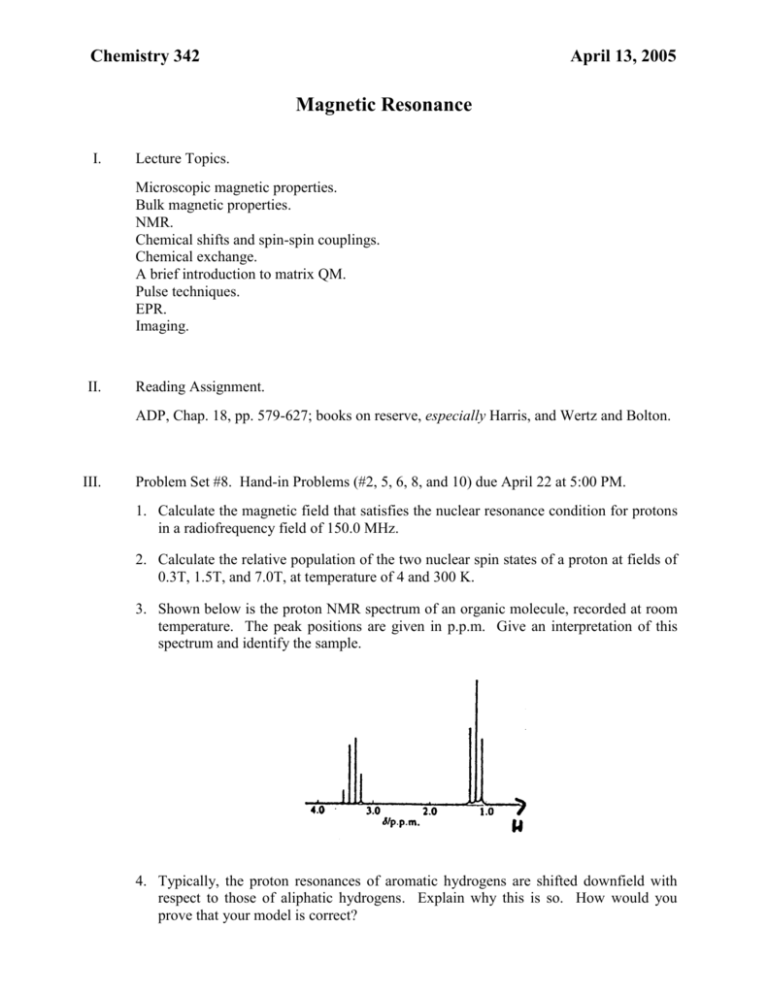
Chemistry 342 April 13, 2005 Magnetic Resonance I. Lecture Topics. Microscopic magnetic properties. Bulk magnetic properties. NMR. Chemical shifts and spin-spin couplings. Chemical exchange. A brief introduction to matrix QM. Pulse techniques. EPR. Imaging. II. Reading Assignment. ADP, Chap. 18, pp. 579-627; books on reserve, especially Harris, and Wertz and Bolton. III. Problem Set #8. Hand-in Problems (#2, 5, 6, 8, and 10) due April 22 at 5:00 PM. 1. Calculate the magnetic field that satisfies the nuclear resonance condition for protons in a radiofrequency field of 150.0 MHz. 2. Calculate the relative population of the two nuclear spin states of a proton at fields of 0.3T, 1.5T, and 7.0T, at temperature of 4 and 300 K. 3. Shown below is the proton NMR spectrum of an organic molecule, recorded at room temperature. The peak positions are given in p.p.m. Give an interpretation of this spectrum and identify the sample. 4. Typically, the proton resonances of aromatic hydrogens are shifted downfield with respect to those of aliphatic hydrogens. Explain why this is so. How would you prove that your model is correct? 2 5. The proton NMR spectrum of 2-bromo-5-chlorothiophene has | δ | = 4.7 Hz and J = 3.9 Hz at a frequency of 30.5 MHz. Use matrix diagonalization methods to predict what the spectrum would look like at 60 MHz. 6. The NO group in N,N-dimethylnitrosamine, (CH3)2N-NO, rotates, and as a result, the magnetic environments of the two CH3 groups are interchanged. In a 60 MHz spectrometer, the two CH3 resonances are separated by 39 Hz. At what rate of interconversion will the two resonance collapse into a single line? 7. Repeat Problem 2 for an unpaired electron spin. Is EPR a more sensitive, or less sensitive, technique than NMR? Why? 8. The center of an ESR spectrum of the methyl radical occurs at 329.4 mT in a spectrometer operating at 9.233 GHz. What is the g value? 9. A free radical contains one 14N nucleus (I = 1) with hyperfine constant 1.03 mT and two equivalent protons (I = 1/2) with hyperfine constant 0.35 mT. Predict the form of the ESR spectrum. 10. Benzene radical anion is relatively easy to prepare by chemical reduction of benzene in a dry solvent like THF. Use the results of Hückel MO theory to predict the appearance of the EPR spectrum of this species. Compare your results with experiment, and draw any conclusions that you can regarding the validity of the Hückel method.





